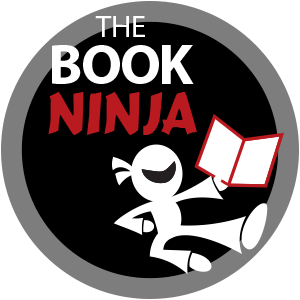Nowadays, many authors are choosing to publish their masterpieces on their own terms using vanity or subsidy publishers such as Smashwords or Barnes and Noble’s Pubit. There are many examples of such companies, including Lulu, Xlibris and I-Universe. While these establishments do have their uses, for specialty, limited-release books, or private books including poetry and memoirs as examples, there are still drawbacks to their use. In the following paragraphs, a few of them will be discussed, as well as ways to combat their effects.
Limitation #1: Distribution Difficulties
There are three primary criteria that need to be met if a book is to be placed in a brick and mortar bookstore, or if you as a local author wish to hold a book signing there. The first is the price point of the book. In simple terms, the price point is the price at which the popularity of the book will remain high (rather than the typical overpriced books that scream, “I’m self-published!”). Second, most bookstores require a discount for purchasing the book, usually a bare minimum of 45%. Finally, most bookstores won’t come near a book unless they have the option to return unsold copies.
In the world of subsidy or vanity publishing, these criteria are rarely, if ever met to the satisfaction of the bookstore, severely limiting the author’s marketability. First, in order for the “publisher” to make a profit, nearly all vanity publishers require a book that is priced well beyond the price point. Second, the normal discount offered to traditional bookstores is around 35% – significantly less than what the large bookstores require. Finally, the option of returnability is not even an option with most vanity/subsidy publishers.
Of course, some of these publishers are more than willing to accommodate these three requirements—for an additional fee to the author, of course. For example, most subsidy/vanity publishers do not offer packages that contain a returnability clause in the distribution contract. However, one subsidy publisher has offered to add this feature for a price of $800.00 per year. It is hard to see the value in that.
Limitation # 2: Royalties and Up Front Payments
Like it or not, subsidy/vanity publishers are not in business to publish your next novel. They are here to make a profit, pure and simple. Luckily for them, their simple business model has worked quite well. Unlike the average author, which makes a profit by selling books, these “self-publishing” publishing houses make a profit by convincing authors to use their services, and pay fees, and often give up a hefty percentage of the royalties for the services provided.
These publishers will convince authors to use their services by claiming to be easier to use, offering more autonomy than traditional publishers, and an ease-of-use that seems to be second to none under first inspection. However, when we look a little bit closer, the great deal offered often looks a little less great the more it is studied. For example, in most cases:
- The author is responsible for format: typesetting, graphics, and book cover design, either by themselves, or by hiring someone to do it. If the vanity publisher is asked to help with the task, there is an upfront fee, sometimes in the thousands of dollars.
- The author is responsible for all edits, or for having someone edit their manuscript. Again, if the subsidy-publishing house is brought on board, there is an upfront fee, in addition to the cost already cited for publication and distribution.
- The author is responsible for any promotion, and marketing of the book outside of the distribution and marketing plan of the subsidy publisher. That means all blogs, interviews, and appearances must be handled completely by the authors.
- Even if the author chooses to complete the formatting, editing, and marketing all on their own, they are still required to give somewhere between 40% to 60% of their royalties to the subsidy publisher.
Like it or not, these subsidy publishing houses will make money off of your hard work, both before, during and after your book is published. To be fair though, there are some subsidy publishers who have much better, and fairer terms of contract; unfortunately they are still very hard to find.
Note here that the problem is not these companies charging for these services, as any true self-publishing author would be required to do the same things. The main issue is that the companies then take a large percentage of the profits of every book that is sold, thus creating a “pay now, pay later” scenario which makes it harder for authors to make up their investment.
Limitation # 3: Who Really Owns the Rights?
Believe it or not, one of the biggest, and most damaging mistakes that authors make when dealing with subsidy publishers is not knowing what they are getting into, and not carefully reading the terms of contract. Most authors believe at the end of the process, they will own the copyright, distribution rights, everything related to the printing of their book. Sadly, though, almost all subsidy publishing agreements will provide the copyright to the author, but give exclusive distribution rights to the publisher. That means that without careful consideration and negotiation on the part of the author, they are limited in how, when and where the book is published. Depending on the various agreements of the subsidy publisher with their distributors, the exposure of your book could be very limited indeed.
The other issue with these “self-publishing” companies taking distribution rights is that their name is tied to the book. If you suddenly grab the interest of a traditional publisher for your book, it is a living nightmare for that publisher to take those distribution rights from the current vanity publisher. With all the great writers clambering for publication, why would traditional publishers bother with an extra step?
So What Can Be Done?
So what is an author to do? There are a few options open to those who wish to publish their book, and one of them is to go the traditional route of publishing. There is a reason why this has been the standard for so many years. However, if you feel that self-publishing is your best route to becoming an author, not to mention the control and fast timing it offers your book, it is possible to truly self-publish. Many printing houses will provide the use of their printing services for a fee, and most are extremely reasonable, given the expertise and experience they can provide. If desired, you can even open a publishing company of your own with a simple “doing business as” certificate (check with your county laws). In most cases, and each state is different, the whole process takes less than a month. Then, it is a matter of getting an ISBN for the book, usually about $125.00 (or $250 for 10 of them), and using the services of a print house to print and bind the books.
By publishing on your own, there are a number of printing, distribution and marketing options available to you.Many self-publishing authors will use a POD printer and a combination of online sales, marketing to brick and mortar booksellers (if they used POD correctly) and distribution through friends and family to move the majority of their books. Plus, if a publishing house takes an interest in your book, the next edition just might be published through their company!
Please don’t misunderstand—true self-publishing is not for everyone. However, if you know that your book is worth publishing, it is definitely worth a look into publishing it completely under your own terms.


Great post, Kristin. It debunks some of the myths that people have.
I can’t tell you how glad I am that I started Motion Publishing.
Tip to all – spend the money on professional cover people and production experts like Kristin. Don’t try to do everything yourself. Your book won’t look nearly as good and you won’t be as proud of it.